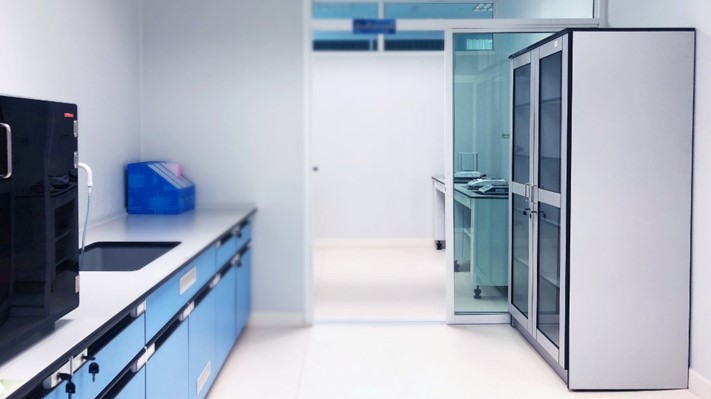Handling and storing flammable materials are unavoidable aspects of day-to-day operations in various industries. Whether you work in a manufacturing plant, a laboratory, or any facility that deals with flammable substances, prioritising safety is paramount.
Flammable materials, ranging from liquids to gases, pose significant risks if not stored and handled carefully.
We will delve into the top flammable storage safety tips you need to know to ensure a secure working environment for employees and the facility itself.
1. Understanding Flammable Materials
Before we explore safety tips, it’s crucial to understand what constitutes flammable materials. Flammable substances can easily ignite and catch fire in the presence of an open flame, spark, or heat source.
These materials can be in various forms, including gases, solids, liquids, and powders. Some examples include gasoline, solvents, chemicals, and certain types of gases used in manufacturing processes.
2. Flammable Storage Cabinets
One of the fundamental safety measures in handling flammable materials is utilising specialised storage cabinets. These cabinets provide a controlled environment for storing flammable liquids, minimising the risk of fire and explosion.
When choosing a flammable storage cabinet, ensure it complies with relevant safety standards and regulations. Cabinets should be made of fire-resistant materials, labelled, and equipped with secure locking mechanisms.
3. Proper Segregation and Storage
Proper segregation and storage of flammable materials are essential for preventing accidental spills, leaks, and reactions. Flammable substances should be categorised based on compatibility, and you must store incompatible materials separately to avoid chemical reactions.
Prioritise proper labelling of containers with clear identification of the stored materials, handling instructions, and hazard warnings. Adequate ventilation in storage areas is crucial to dissipate any vapours that may accumulate.
4. Temperature Control
Flammable materials often have specific temperature requirements for safe storage. It’s crucial to adhere to these guidelines to prevent overheating, which can lead to spontaneous combustion or other hazardous reactions.
Utilise temperature-controlled storage units when necessary and avoid exposing flammable materials to extreme heat or cold. Regular monitoring of storage temperatures ensures safety standard compliance and reduces the risk of accidents.
5. Fire Prevention Measures
Implementing robust fire prevention measures is vital in facilities that store flammable materials. This effort includes installing fire suppression systems, such as sprinklers, and having firefighting equipment, such as fire extinguishers, strategically placed throughout the facility.
Regular fire drills ensure employees are familiar with emergency procedures and know how to use firefighting equipment effectively.
6. Static Electricity Control
Static electricity can pose a significant risk when handling flammable materials since it creates sparks that may ignite vapours or gases. Implement anti-static flooring and grounding equipment and provide employees with proper personal protective equipment (PPE), including anti-static clothing and footwear, to control static electricity.
7. Proper Handling and Dispensing
Proper handling and dispensing of flammable materials are critical steps in preventing accidents. Employees should receive thorough training on the safe handling procedures for the specific materials they work with. This effort includes using appropriate equipment, such as grounded pumps and anti-static hoses for transferring liquids.
Always dispense flammable substances in well-ventilated areas away from potential ignition sources.
8. Regular Inspections and Maintenance
Routine inspections and maintenance of storage facilities and equipment are crucial for identifying potential hazards and addressing them promptly. Inspect flammable storage cabinets, pipes, valves, and other equipment regularly for signs of damage or corrosion.
Ensure that safety features such as emergency shutdown and ventilation systems function correctly.
9. Employee Training and Awareness
Educating employees about the hazards of flammable materials and providing comprehensive training on safety protocols are integral to creating a secure working environment.
Employees should be aware of the properties of the flammable substances they work with, the potential hazards, and the proper procedures for handling emergencies. Regular training sessions and updates keep employees up-to-date about new safety measures and reinforce the importance of following established protocols.
10. Emergency Response Planning
A well-defined emergency response plan is vital during a fire or other emergency involving flammable materials. The plan should outline evacuation procedures, communication protocols, and the use of emergency equipment.
Run regular drills to ensure all employees know their roles during an emergency. Additionally, set clear lines of communication with local emergency services to facilitate a response in the event of an unexpected incident.
11. Compliance with Regulations
Complying with local and national regulations governing the storage and handling of flammable materials is non-negotiable. Stay up-to-date about pertinent safety standards. Failure to comply with regulations poses adverse risks and can result in legal consequences, fines, and damage to the organisation’s reputation.
Prioritising safety in storing and handling flammable materials is essential for protecting personnel and property.
By following these top flammable storage safety tips, you can develop a more secure working environment that reduces accident risk and ensures compliance with safety standards. Remember that safety is a continuous process, and regular training, inspections, and updates are crucial for maintaining health and safety protocols within your organisation. You contribute to the employee wellbeing and the facility’s success by fostering awareness and adherence to safety protocols. We hope these tips help you facilitate a safe work environment.

